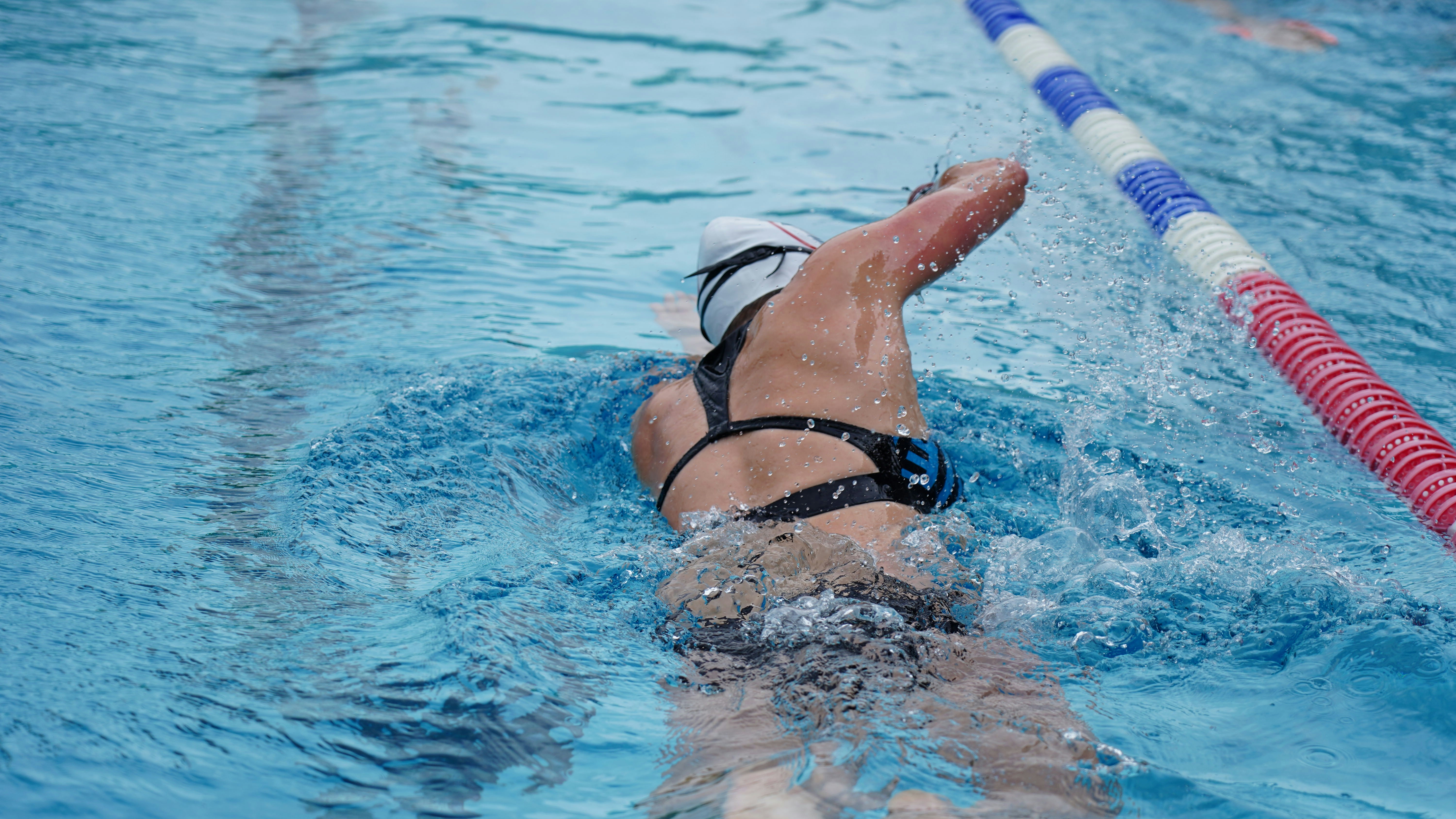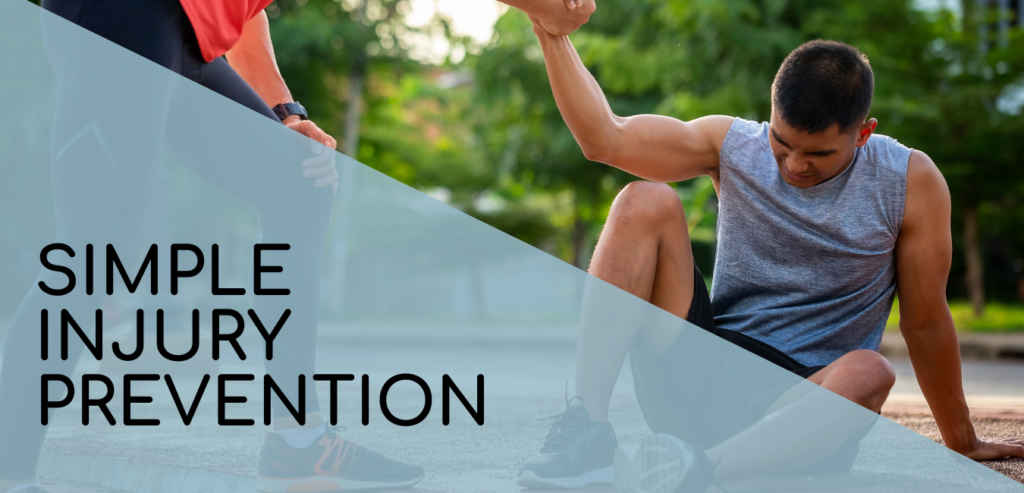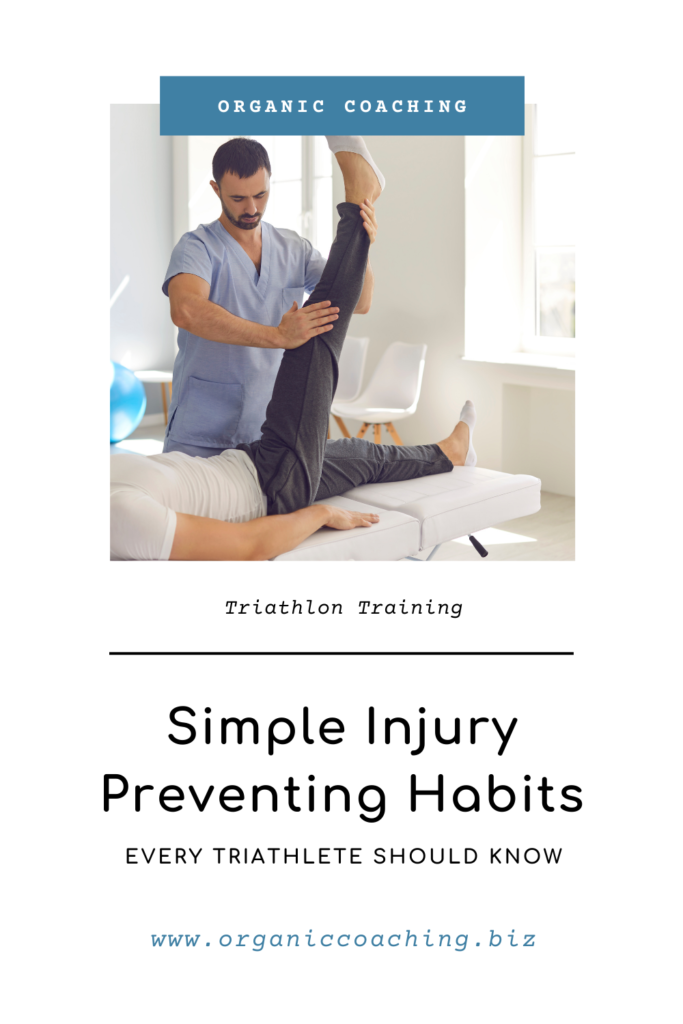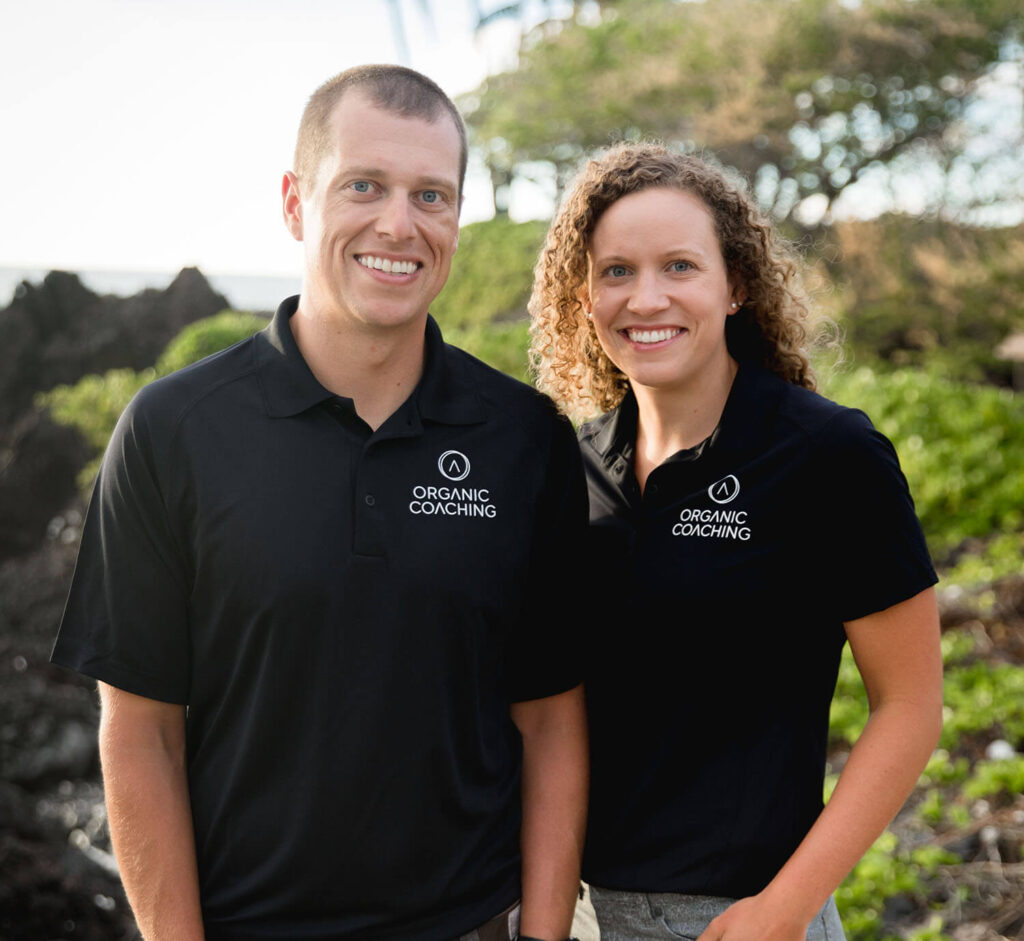
Do you know what the most common triathlete fear is? Training all season long, only to have an injury prevent you from crossing the finish line. (Ugh – there’s nothing more disappointing!) As triathletes, we’re pretty hard on our bodies. However, there are a few simple injury prevention strategies so that you make it to race day injury-free!
Today, Coach Val is sharing a few of her favourite practices that are simple and effective for injury prevention.

Sounds simple right? Wrong! It’s not uncommon for athletes to ignore parts of their plan that aren’t their favourite. Only to get injured shortly after. So why exactly is following the plan a simple, but effective way to prevent injuries?
Your coach is using a periodized approach with cycles of progressive overload and rest to allow your musculoskeletal system and cardiovascular systems to adapt. Contrary to popular belief, more does not mean better.
Overtraining is not going to make you a better athlete. Please, do not add extra intensity within a session, extend sessions or add extra unnecessary workouts. Instead, if you would like to change or add something to your plan, consult your coach first. They’ll be able to adjust the plan in a way that proactively prevents unneeded injury.
On the flip side, completion of all sessions in your plan is also very important, especially the strength training sessions. It can be tempting to skip training sessions because at times they may be short and there always seems to never be enough time in the day.
However, a combination of strength, mobility, flexibility, stability sessions is vital to correcting muscular imbalances, improving your range of motion, power output, and postural control. All key elements to injury prevention.
By doing all of the scheduled workouts, you will become a healthier, stronger and more efficient athlete. If you’re skipping sessions then you’re not working on the entire body and leaving areas to be vulnerable to injury.
When you are at peak training volumes, those strength sessions that you’ve done earlier in the season will start to pay off.
This strategy goes alongside following your training plan because naturally, you’ll have rest days scheduled. You need to focus on sleep, stretching and proper nutrition and hydration as much as you focus on active training.
Also, your rest days and weeks are not meant to be the day you catch up on all the house chores, do another sport or hike 10 miles. Your rest time is meant for actual rest. Your body needs time to repair itself. If you’re not giving yourself proper rest time, then you will be more prone to an overuse injury
The two key pieces of equipment are your running shoes and your bike!
If you are training year-round, your running shoes will most likely need to be replaced a few times a year. Each shoe is different, but the general rule of thumb is to replace your shoes every 300-400 miles.
The best way to know if it’s time to replace your runners is to check the bottom of your shoes for excessive wear. A frequent shoe check, along with logging the miles used per shoe on an app such as Garmin Connect will prevent many lower-body injuries, in joints like the knee, foot, hips, etc.
You’ll also want to consider having a bike fit done. A bike fit will ensure your body is moving at the most efficient angles for your degree of flexibility and allow you to run well off the bike too. When biking for long periods of time with things out of position, conditions such as numbness, knee or back injuries can occur.
If you feel pain while training, be sure that you mention it to your coach. You’ll want to note and share what kind of pain, how much and the location of the pain as soon as possible. Most likely you will also need to seek help from a medical professional, but modifications to your plan can also be made as appropriate.
Learn more about how to be proactive with running injury prevention.
Happy race season!
-Coach Val


Carly and Tyler Guggemos built Organic Coaching in 2014 with a simple philosophy that works. The idea is to take what you have and grow it to get faster, fitter and stronger. And to do it with the time you have – not the time you wish you had.

For athletes who are ready to take their training to the next level while still thriving and succeeding in their professional and family life.
Copyright © 2024 Organic Coaching LLC